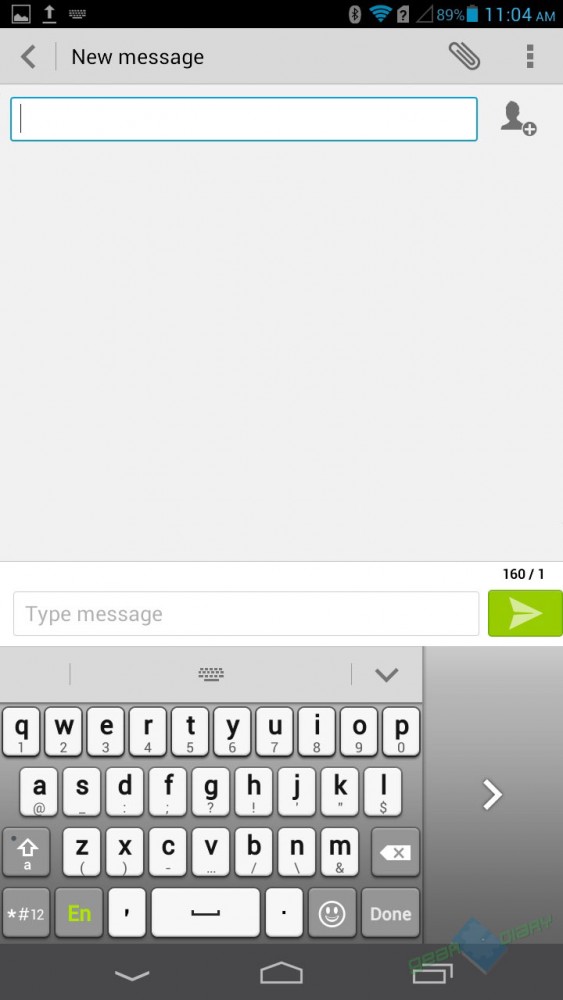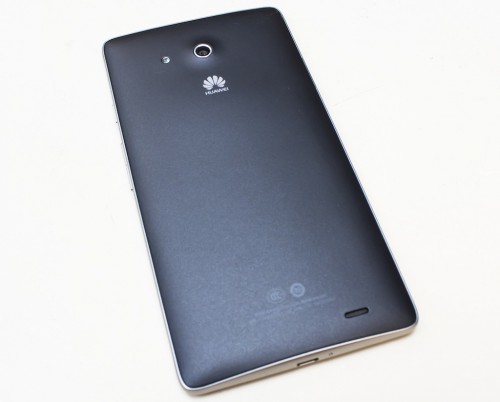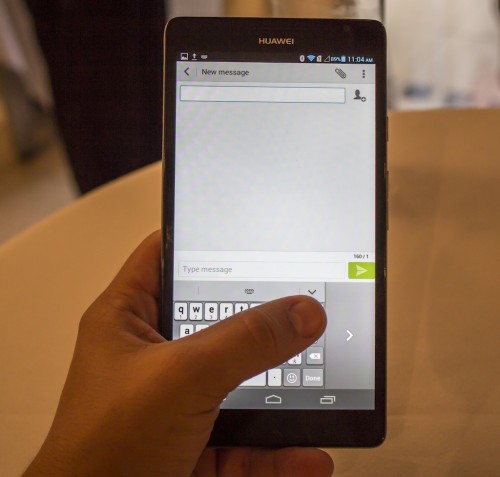Huawei is making a splash in Australia with the launch of the new Huawei Ascend Mate, a 6.1-inch “phablet” to take on the Samsung Galaxy Note II.
At the launch today in Sydney Australia, Gear Diary was able to spend some one-on-one time with the phone that Huawei describes as “Designed for a multimedia experience”.
There is no question the Ascend Mate is a large phone, with a 6.1” IPS+ display dwarfing even its obvious rival, the Samsung Galaxy Note II. Just as surprising is the price, AU$429 when it launches on April 20, 2013.
To put that in perspective, a Samsung Galaxy Note II retails for AU$719 at Harvey Norman, and the 16GB Nexus 4 (with no expandable storage) for AU$419 (inc. delivery from Google). Rather ridiculously, the old iPhone 4 8GB is still AU$449 from Apple!
At 1280×720, it matches the Note II on resolution, but it falls short of the more recent “super phones” incorporating 1080p displays.
Huawei says cost and battery life were considerations when choosing 720p, and in use the Ascend Mate feels no worse for it. At a usable distance the display is bright and sharp, with vivid colours and excellent viewing angles.
But is it too large? Huawei doesn’t think so, emphasizing the large size offers improvements in both media consumption and room for a larger battery.
The Huawei Ascend Mate follows many other high-end phones in eschewing a removable battery, in favour of an integrated 4050mAh pack.
Huawei are touting an easy two days battery life under “average use”, or nine days standby time, as well as ultra-quick charging. The team at the launch indicated some very fast charging times, though couldn’t confirm them at the moment.
We’ll be able to put both claims to the test in a few weeks when we get our hands on a review unit.
Powering the Huawei Ascend Mate is Huawei’s own “High-Silicon K2V3” 1.5Ghz quad-core processor, backed up by 1GB of RAM and an Intel XMM6260 HSPA+ radio. The 8GB of internal storage is rather small, but support for up to 64GB microSD cards will easily alleviate any capacity issues, at a significantly lower price than many microSD-less devices. Update 5/8: Huawei confirmed the Australian version has only 1GB RAM, other markets have 2GB.
Swiping through the interface and opening applications was very smooth, though a poor WiFi connection at the launch venue thwarted any real attempts at testing browsing performance.
The Huawei Ascend Mate is a penta-band 3G phone, offering connectivity on the UMTS 850/900/1700/1900/2100 MHz bands. Dual antennas boost reception by a claimed 20-30%.
The usual WiFi a/b/g/n and Bluetooth 4.0+EDR are included, as is NFC and DLNA media sharing. Update 5/8: Huawei confirmed the Australian version includes NFC, whereas other countries may not.
Wireless charging and 4G are the obvious omissions but, as explained by the Huawei staff, their market research indicated a preference to a sharper price over the inclusion of these features.
The 8-megapixel auto-focus camera includes HDR and panoramic modes, as well as face tracking to keep your subjects in focus as you adjust your framing.
In the hand the Huawei Ascend Mate feels surprisingly comfortable, despite a hefty 198g weight and that enormous screen. The tapered edges and back sit in the hand nicely, while the soft-touch rear has a quality feel whilst improving grip.
The 6.1-inch 1280×720 IPS+ display makes use of in-cell touch technology to eliminate the gap between display and the Gorilla Glass front. It also offers a glove mode, ideal for colder temperatures when gloves would otherwise thwart the use of a capacitive touch screen.
Previous Huawei handsets have offered stock Android experiences, but the Ascent Mate debuts their new “Emotion UI” on top of Android 4.1.2.
Front and centre on the homescreen is the “Me Widget”, providing glance and tap access to your photos, weather, music controls and a couple of favoured contacts.
Emotion UI does away with the traditional app drawer, taking the iOS approach of the home screen being the main point of access to your apps.
As expected, you can customize the Emotion UI with as many widgets and apps as you like.
The back, home and multitask function keys are software-based, and slide out of the way when viewing photos and video, making full use of that massive 6.1-inch display.
Huawei has included several interface tweaks to facilitate one-handed use, including a smaller keyboard that hugs either side of the display.
While usable, you’ll need excellent dexterity to do much more than tap out a few quick responses to messages, something not afforded me.
There really are two headline features for this megaphone – the 6.1-inch IPS+ display, and the sharp AU$429 unlocked price.
At launch the Huawei Ascend Mate will include a bonus $40 Prepaid starter pack with Boost Mobile, which utilises Telstra’s wholesale network to provide 3G coverage.
In a few months time Huawei will make a flip cover available, something of a necessity on a device with such a large expanse of glass. Until then you’ll have to find a third-party case, as none is included in the box.
Huawei also hinted at the upcoming release of a 4.7-inch handset that will be available on several of the major Australia telcos. If it’s pricing is as impressive as the Ascend Mate, there will be some very good value plans on offer.
In a few weeks time we’ll have our hands on a retail unit and provide a full review.
Mitchell Oke was a guest of Huawei at the launch in Sydney, Australia.































